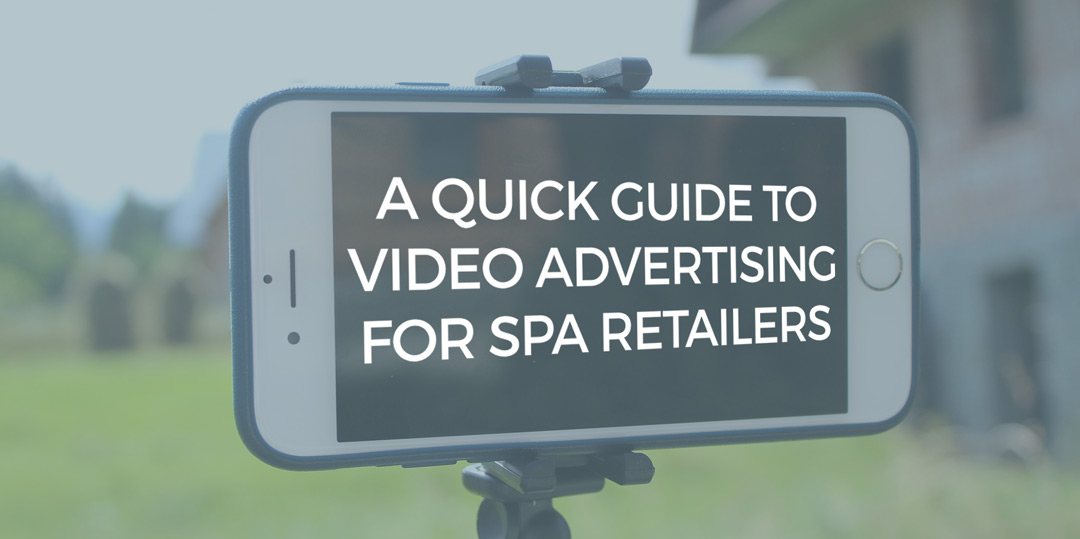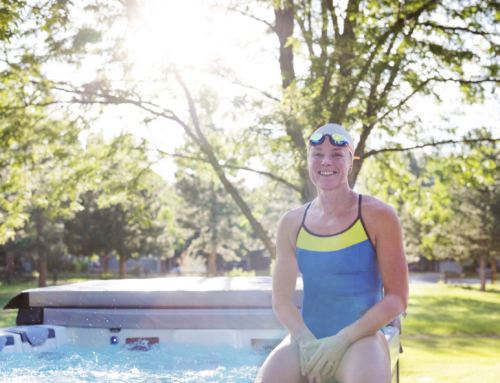The world of advertising is constantly changing, which makes the struggle to decide where to spend your advertising dollars all too real. Shorter attention spans and the desire for immediate gratification are making it more difficult to capture and maintain consumer interest. What’s a hot tub retailer to do when traditional print advertising isn’t doing the trick?
Here’s a hint: “I’m ready for my close-up Mr. DeMille.” That’s right, it’s time to make a web video.
Why Video Advertising
Video advertising appeals to consumers’ shorter attention spans and their desire to obtain information quickly. Brad Jefferson, CEO of Animoto, cites a study that shows “four times as many consumers would rather watch a video about a product than read about it.” Here’s what else the study shows:
- 4 out 5 consumers find demo videos helpful.
- 59% of consumers watch product videos multiple times before purchasing.
Marketing consultant Theresa Pittius reports that Facebook videos for her business garner “50% more organic engagement than other types of content.” When they pay to promote those posts, consumer engagement increases a whopping 400% over photos ads alone. Still not convinced? What if you were told that, worldwide, 52% of marketing professionals say video has the best return on investment over any other type of content?
How to Get Started
Successful video advertising starts with a plan. Anyone can pull out a smartphone and start recording, but without a strategy in place first, it won’t be a “successful” video. The first step is to decide how much money you can allocate for web video creation. Once you’ve established a workable budget, you’ll have a better idea about which method of video creation to use:
- iPhone or Android application
- DSLR (digital single lens reflex) camera
- Semi-professional production
- Professional production
The good news: there are a number of great resources that make it easy for practically anyone to create a dynamic video for their business website. All it takes is a little research into web video apps such as YouTube Director for iPhone, YouTube Channel creation, Twitter Video, and Facebook video ads. One of the most popular is YouTube, but we’ll come back to that.
Planning Your Video
Now that you know what you can afford and have an idea of how you’ll make the video, it’s time to start planning the content. Here’s how:
- Have a specific goal: Are you looking to increase brand awareness, increase sales of specific products, introduce your business, promote special events?
- Tell a story: Include an entertaining narrative that showcases why consumers should buy your products.
- Get to the point: Remember those short attention spans and get to your point quickly. Find a way to grab viewer attention or to make sure your point is made in the first few seconds of the video.
- Choose the right style: Comedic, dramatic, instructional, inspirational are some popular options.
- Be creative: Do something that cannot be done in other advertising formats.
- Look professional: At a minimum, make sure footage is clear and well-lit with good audio.
- Avoid jargon: Steer clear of technical terms; use language all potential customers will easily understand.
- Use demos: Show how the product or service works (chemical usage in the hot tub, for example).
So, let’s say your goal is to increase sales by convincing your audience they need a hot tub. You might create a story where a family is arguing over how to spend their Friday night, and suddenly they remember the hot tub. The video shows how willing everyone is to set aside their devices and b-line for the backyard where the warm water awaits. It ends with the family enjoying the tub laughing, relaxing, and simply connecting together.
Or if your goal is introduction and brand awareness, the story could be a walk-through of what customers can expect to experience at the store. This could include friendly service, a panorama of your showroom, and customers trying out the test spas.
End the video with a call to action that tells the viewers what you want them to do after watching the video.
Grab the viewer’s attention by making the video both comedic and instructional. End the video with a call to action that tells the viewers what you want them to do after watching the video. You can provide links to other videos, ask them to subscribe to your YouTube Channel, or provide a link to your company website where they can learn more about your product. And don’t forget, customer conversion can be increased by 80% simply by placing a video on your landing page.
As you begin the creative process, here are a few additional things to keep in mind:
- Show both people and products in your video.
- Keep the length of the video short.
- End the video with a specific call to action.
- Prioritize measurement and analysis.
Don’t let the prospect of measurement and analysis scare you away from video advertising. These are part and parcel of most video advertising apps, so that aspect of the video marketing experiences is relatively simple to manage.
Making Your Video
According to research from BIA Kelsey, over the last year 25.7% of small businesses had video on their website. Those surveyed cited these production methods:
- 67.1% made the videos themselves
- 28.6% used social media ad tools
- 14.7% utilized Producer slide shows
- 8.5% used Producer custom video
- 7.3% used Producer stock video
- 1.7% used other methods
Their research also found that 22.2% of businesses not using video now are planning to video spend within the next year. Current ad placement breaks down like this:
- 16.1 % use YouTube
- 12.8% use Facebook Video
- 11.4% use Video Display
- 3.0% use Twitter Video
- 7.1% use other online video
If this were a contest, the landslide winner for method of web video production would be businesses self-producing on YouTube. In 2016, YouTube released a new app for iOS called YouTube Director that makes creating and running video ads a lot easier. It offers three ways to make a video ad:
- The Director App: Lets you make professional-quality videos from your iPhone
- YouTube Director Onsite: Google (parent company of YouTube) will send a professional filmmaker to locations in select cities to shoot and edit your ad with the only cost being you must commit to spending $150 on YouTube advertising over a designated time period.
- Auto-Creation: The Director App can create the entire video for you using existing assets.
Another option is to create a YouTube channel for your business that you can link from your company website, Twitter, Facebook, and other social media sites. To set up a YouTube channel, you will need both a Google+ business page and a personal Google+ profile. Kevin Donnelly at Shopify provides a detailed, easy-to-follow guide to help you get started. Customizable features like channel art and channel icon help make your YouTube Channel stand out.
If this were a contest, the landslide winner for method of web video production would be businesses self-producing on YouTube.
You’ll achieve the best results from your video advertising efforts by publishing them on multiple channels. The following links provide more information:
Take the Plunge
With shoppers who view online video 1.8 times more likely to make a purchase than shoppers who don’t watch videos, hot tub retailers must take the plunge into web video advertising. Marq Shramm, Marketing Manager at Spa Inspectors says “the best thing to me was when the first customer came in afterward and said they came into the showroom because they had seen the video.” As you decide whether to step into the spotlight of video advertising, remember that marketers who use video grow revenue 49% faster than non-video users. It’s time to get ready for your close-up!









Leave A Comment